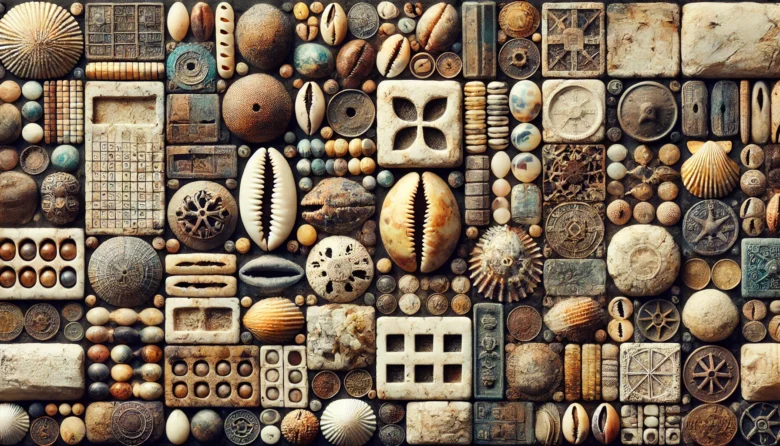Did you know that massive stone discs called Rai stones once served as currency on the Micronesian island of Yap? These unique “coins” tell the fascinating story of how ancient civilizations innovated with money in ways that often reflect today’s economic systems.
Introduction
Currency is the lifeblood of trade, yet few of us consider how money evolved over time. While we’re accustomed to banknotes and digital wallets today, ancient civilizations thrived using creative monetary systems, many of which have been lost to time. This blog explores these “lost currencies” and how they not only shaped ancient economies but also laid the groundwork for modern financial systems. From cowrie shells to giant stone discs, the history of money is more diverse and surprising than most people realize.
The Role of Currency in Civilization
Money has always been more than just a medium of exchange. It is a symbol of trust, power, and innovation. While today’s money is largely digital, ancient societies relied on tangible, often unusual objects to represent value. What these currencies lacked in practicality, they made up for in cultural significance.
Cowrie Shells: Nature’s Coin
Cowrie shells were one of the earliest forms of currency, used extensively in Africa, Asia, and the Pacific Islands. Valued for their durability, portability, and beauty, cowries were not just economic tools but also symbols of wealth and status.
- Example: In West Africa, cowrie shells were so widespread that they became the standard currency for centuries. However, their overuse eventually led to inflation, as European traders began flooding the market with imported shells.

Rai Stones of Yap: The World’s Largest Coins
The island of Yap in Micronesia used massive stone discs known as Rai stones as money. Measuring up to 12 feet in diameter, these stones were too cumbersome to move. Ownership was often established through oral agreements, effectively creating one of the earliest systems of virtual currency.
- Case Study: Despite their size, Rai stones served practical purposes. If a transaction required transferring ownership, the stone itself rarely moved. Instead, the community maintained a record of the exchange.
Commodity Money: Salt, Tea, and More
In ancient China, bricks of tea were used as currency, particularly along the Tea Horse Road. Roman soldiers were frequently compensated with salt, which led to the term “salary,” originating from the Latin word salarium.
- Anecdote: The value of salt was so high in medieval Europe that it was called “white gold,” and entire economies relied on its trade.
The Fall of Lost Currencies
Why did these systems disappear? Several factors contributed:
Colonialism: European powers often imposed their monetary systems on the regions they colonized, displacing local currencies.
Technological Advancements: As societies grew more complex, simpler and more standardized forms of money—like coins and paper notes—replaced earlier systems.
Global Trade: The rise of interconnected economies demanded universal systems that transcended regional currencies.
Lessons for Today’s Economy
While these currencies may seem antiquated, they offer valuable lessons:
Trust and Consensus: Systems like the Rai stones demonstrate the importance of trust in maintaining a currency’s value.
Cultural Context: Money is deeply tied to the culture and needs of its users. Understanding this can inform better financial policies.
Sustainability: Commodity-based systems highlight the value of using natural resources wisely—a lesson still relevant in today’s climate-conscious world.
Conclusion
From shells and stones to salt and tea, lost currencies reveal the innovative ways ancient civilizations solved economic challenges. These systems remind us that money, at its core, is a shared agreement. As we move toward an increasingly digital future, reflecting on these forgotten systems offers valuable insights into trust, adaptability, and cultural significance. So, next time you make a digital transaction, spare a thought for the humble cowrie shell or the towering Rai stone that paved the way for modern finance.
Author’s Note
Exploring lost currencies has been a fascinating journey into the past. If you enjoyed this blog, consider diving deeper into the world of economic history. You’ll be amazed at how much we can learn from ancient civilizations.
G.C., Ecosociosphere contributor.
References and Further Reading





Comments
What’s Happening i’m new to this, I stumbled upon this I’ve found It absolutely useful and it has helped me out loads. I hope to contribute & help other users like its aided me. Great job.
Here to explore discussions, exchange ideas, and gain fresh perspectives throughout the journey.
I like learning from different perspectives and sharing my input when it’s helpful. Happy to hear fresh thoughts and building connections.
There’s my site:https://automisto24.com.ua/